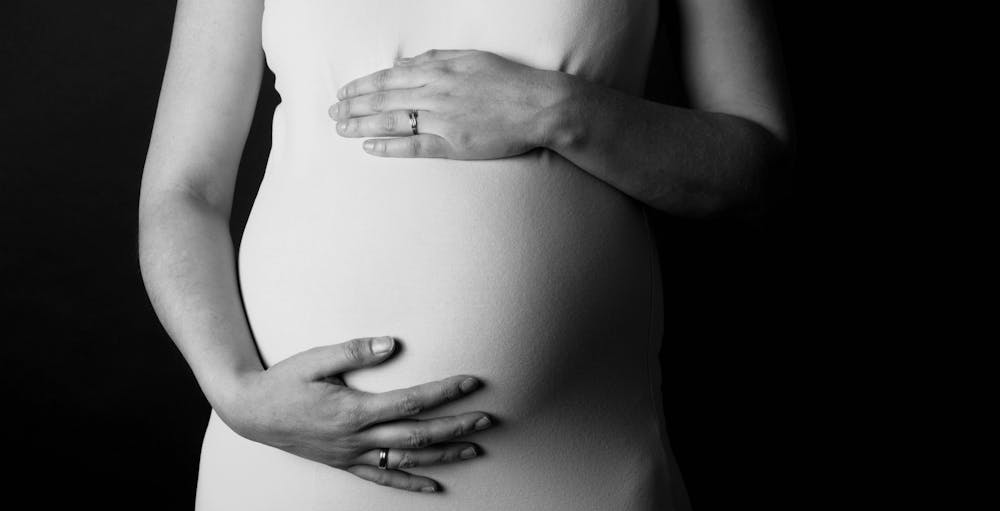In New Jersey and in the rest of the nation, the maternal mortality rate has been on the rise for the past two decades. Most of these pregnancy-related deaths are preventable — according to the CDC, 60% of maternal deaths could be avoided. Pregnancy has become especially dangerous for women of color, who are at least three times as likely to die from pregnancy-related complications.
Over 100,000 women give birth in New Jersey each year, and First Lady of New Jersey Tammy Murphy has made it her mission to make the state safer for these women and their babies. However, the way Murphy and her supporters measure New Jersey’s maternal mortality rate misrepresents the magnitude of the maternal mortality crisis — both locally and nationally.
This past January, Murphy launched Nurture NJ, her “statewide awareness campaign that is committed to reducing infant and maternal mortality and morbidity,” according to the initiative’s website. In a variety of public appearances, Murphy has claimed that the state ranks 45th out of the 50 states in terms of maternal mortality.
This statistic has been cited by New Jersey columnists, the Associated Press, and advocacy groups, and all for good reason: mothers are dying unnecessary deaths, and the threat of being known as one of the worst states for maternal health is conceivable as a motivating force for remedial action.
But where does the figure come from, and is it accurate?
The ranking appears to come from the United Health Foundation’s 2018 Health of Women and Children Report. Nurture NJ cites the same ranking on its website and attributes it to the United Health Foundation. The Foundation’s 2018 report maintains that New Jersey has a maternal mortality rate of 38.1 pregnancy-related deaths per 100,000 live births.
The report’s maternal mortality rate and ranking for New Jersey, as well their interpretations, are misleading for several reasons.
First, the 2018 report only supplies data for 48 states. As a footnote in the report explained, results for Alaska and Vermont were “suppressed due to inadequate sample size and/or to protect identity.” Even if the rankings were accurate, New Jersey would be 45th out of 48 states in maternal mortality; the frequent characterization of the ranking — as if it were out of all 50 states — is incorrect.
Second, the rankings are not accurate because the values used to compute the ranking are not accurate. New Jersey’s 2018 maternal mortality rate was not 38.1 as the report claimed. The 2018 report cited death certificate data from the Mortality Files of the Center for Disease Control (CDC) Wonder Online Database, years 2011 to 2015. This five-year spread indicates that the report’s “2018 ranking” and “2018 value” for maternal mortality rates by state are not actually representative of 2018, but rather a period of time three years prior.
When using more recent data from CDC Wonder Online Database, specifically from years 2013 to 2017, New Jersey’s maternal mortality rate appears to be 46.6 deaths per 100,000 live births. From 2013 to 2017, there were 238 death certificates that reported pregnancy-related causes. According to New Jersey State Health Assessment Data, there were 510,971 live births during that five-year period. The maternal mortality rate (MMR) thus seems to be 46.6: the rate is computed by dividing the number of pregnancy-related deaths by that of live births, then multiplying the figure by 100,000.
But New Jersey’s maternal mortality rate is likely even higher. Death certificate data, the chief source of the CDC Wonder Online Database’s Mortality Files, have been shown to largely underreport maternal deaths.
Additionally, the classification of maternal death in the CDC’s Mortality Files is listed as “pregnancy, childbirth and the puerperium.” The puerperium refers to the approximate 42 days after childbirth, during which the mother’s body returns to its nonpregnant state.

The CDC’s definition of pregnancy-related death, however, extends beyond the 42 days following birth: it includes the full year following the termination of pregnancy. The death certificate data does not account for the remainder of the year following birth, a time during which more maternal deaths certainly occur.
Given the skewed nature of the United Health Foundation’s 2018 maternal mortality rates, it is difficult to tell where exactly New Jersey falls in reference to other states. The foundation’s 2019 Health of Women and Children Report, which uses data from 2013 to 2017 as was used above, ranks New Jersey as 47th out of the 50 states in maternal mortality. Once again, the five-year period is not representative of the report’s listed “2019 ranking.”
Yet, even if the figures were accurate with respect to year, the very practice of employing rankings in discussions of maternal mortality is suspect.
According to sociologist Elizabeth Mitchell Armstrong, a professor specializing in reproductive and maternal health here at Princeton University, “rankings are strange statistics to use in the first place.” She alleges that, in comparing New Jersey to the national rate, we normalize the national rate, which is highly abnormal — higher than that of any other developed nation.
Further, the maternal mortality rate alone does not even begin to account for the number of mothers who come close to death — who experience “maternal morbidity.” According to the Health Resources and Services Administration, maternal morbidity occurs at a rate 100 times greater than maternal mortality.
Tammy Murphy’s crusade to improve maternal outcomes is urgently needed. Yet, misleading characterizations about the magnitude of the maternal mortality crisis, however big or small, can hamper that urgency. Regardless of how New Jersey compares to the rest of the nation, the lives of mothers throughout the state are at stake—unnecessarily. We know these deaths—and near-deaths— can be prevented. That, in itself, should be enough to inspire action.
Morgan Carmen is a junior from New York City, majoring in the Woodrow Wilson School. She can be reached at mcarmen@princeton.edu.









